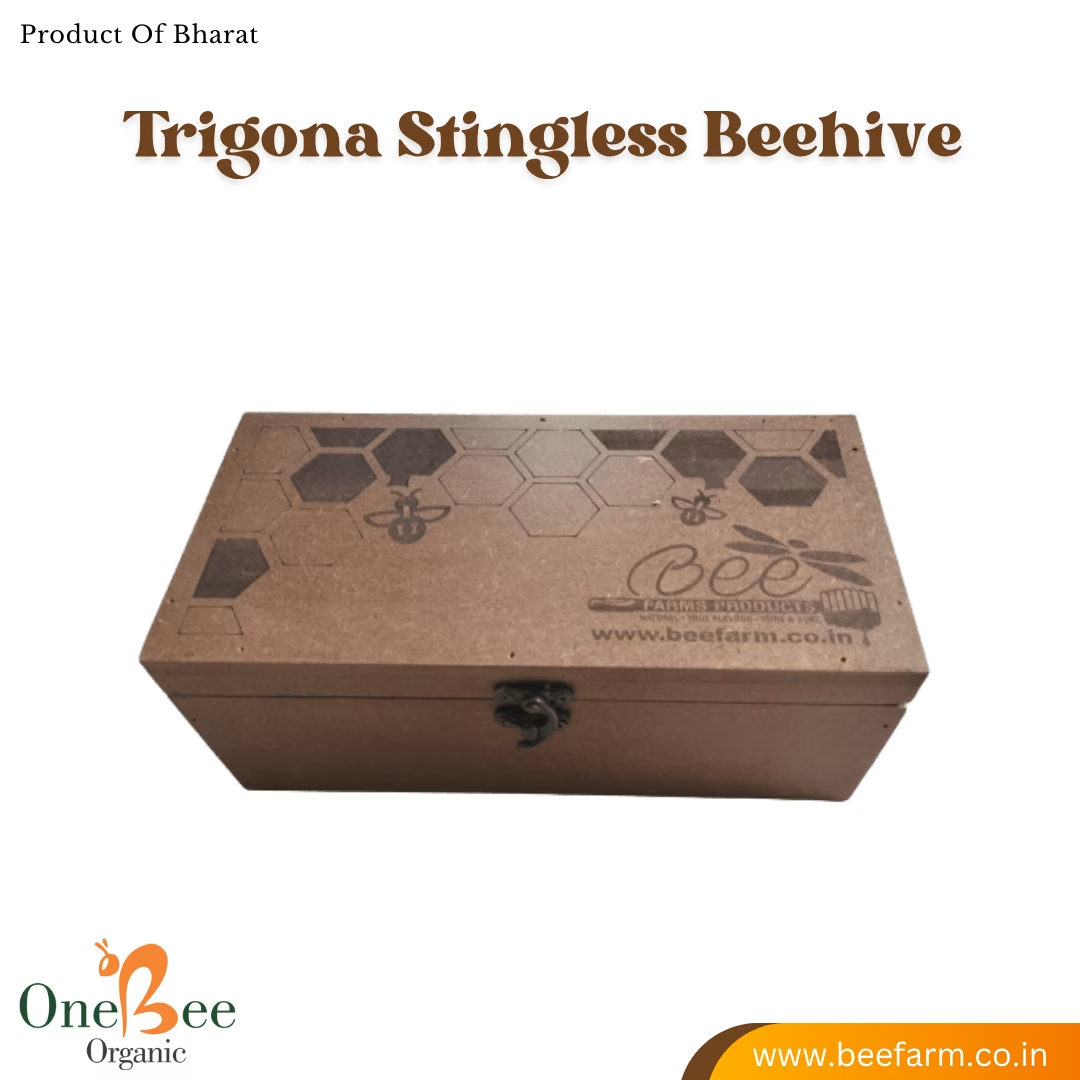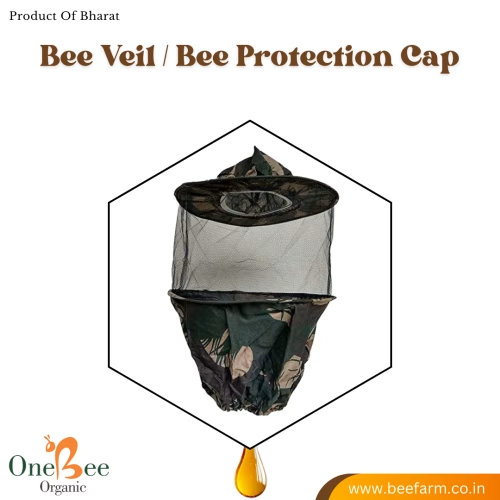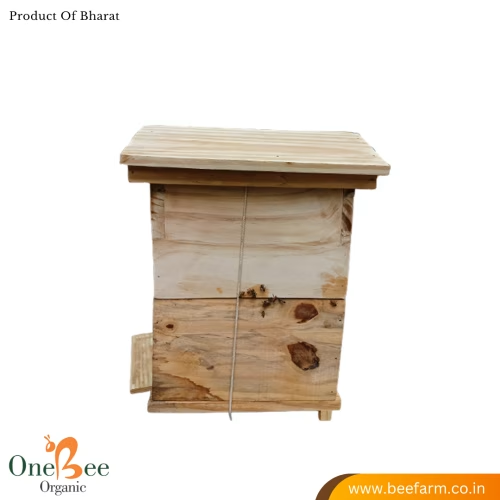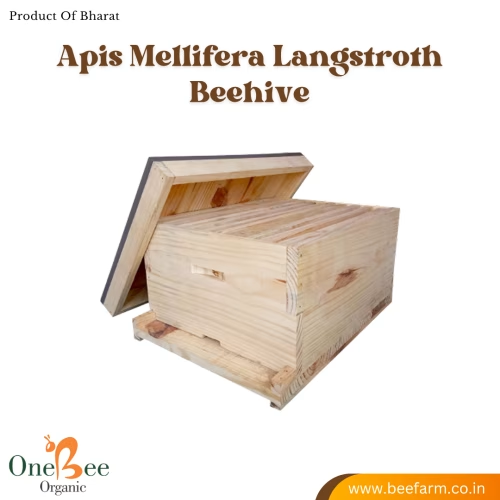Description
Stingless Beehive
Stingless bees, known for their non-aggressive nature, build nests in various natural and artificial cavities. They commonly inhabit hollow tree trunks, underground spaces, termite nests, and rock crevices. However, they also adapt to unconventional nesting sites such as wall cavities, discarded containers, water meters, and storage drums. Beekeepers often keep these bees in their original log hives or transfer them into wooden boxes for better hive management. Additionally, some use bamboo, flowerpots, coconut shells, or repurposed containers like broken guitars and water jugs to house them.
Hive Structure and Honey Storage
Inside a stingless beehive, bees construct large, egg-shaped storage pots using beeswax combined with plant resin, forming a material called cerumen. These pots store honey and pollen, providing nourishment for the colony. Unlike traditional honeycombs, these storage units surround the central brood combs, where larvae develop.
Colony Behavior and Development
Worker bees follow a structured lifecycle based on age. Newly emerged bees remain inside the hive, managing internal tasks. As they mature, they transition into roles as guards or foragers. Unlike honeybees, stingless bee larvae do not receive continuous feeding from adult bees. Instead, pollen and nectar are placed into a cell along with an egg, which is then sealed until the adult bee emerges after pupation.
Colony Size and Nest Composition
The size of a stingless beehive varies significantly, ranging from 300 to 80,000 workers, depending on the species. Bees reinforce their nests with a mixture of wax, plant resins (propolis), and other substances, ensuring a strong and protective environment. Their unique hive structure and social behavior make them a valuable species for sustainable beekeeping and pollination.














Reviews
There are no reviews yet.